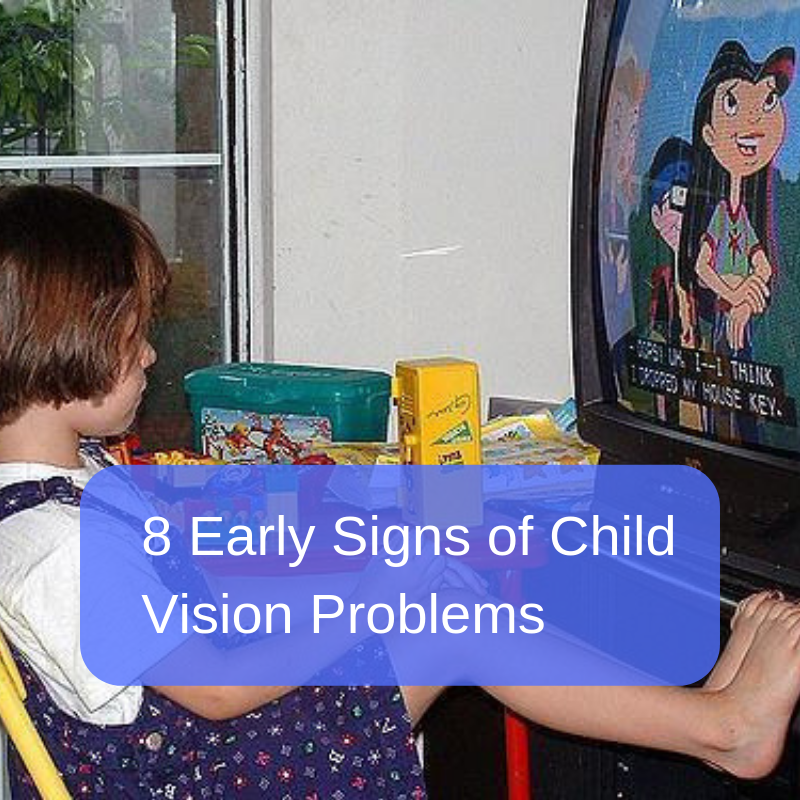Vision is an integral aspect of human perception, influencing how individuals interact with the world. Any challenge to visual acuity can result in significant cognitive, behavioral, and emotional ramifications. Thus, early identification of vision problems is paramount, especially in children, as it can dramatically alter their developmental trajectory. This article meticulously delineates the signs and symptoms associated with potential vision issues, emphasizing their early recognition and the resultant impact on overall well-being.
Understanding the intricacies of vision problems necessitates a keen awareness of not only the physiological manifestations but also the psychological implications. This understanding fuels proactive measures that can enhance an individual’s quality of life, paving the way for timely intervention and therapy.
Recognizing the Early Warning Signs
When it comes to vision, one must be vigilant for subtle cues that may suggest underlying problems. Children, in particular, often lack the verbal capacity to articulate their experiences, making observant parental and educator engagement crucial. The following signs may indicate potential vision deficits:
Frequent Squinting and Eye Rubbing
One of the most ubiquitous indicators of visual distress is squinting. This involuntary response often occurs when an individual is straining to focus on distant objects or reading materials. In children, recurrent squinting can be a significant red flag, signifying refractive errors such as myopia (nearsightedness) or hyperopia (farsightedness). Moreover, persistent eye rubbing, often a reflexive effort to alleviate discomfort, may signal underlying issues such as allergies or dry eyes, encompassing a broader spectrum of visual maladies.
Inconsistent Eye Movements
Observations of a child’s eye tracking and alignment offer substantial insights into visual health. Inconsistent eye movements, characterized by eyes that do not work together harmoniously, can lead to conditions such as amblyopia or strabismus. Atypical patterns, such as one eye drifting inward or outward, may suggest profound neurological or muscular issues that warrant immediate medical consultation. Such discrepancies not only impede visual processing but can also manifest as challenges in attention span and spatial awareness.
Avoidance of Visual Tasks
Children are naturally drawn to a variety of activities, and a sudden disinterest in tasks that require visual concentration—such as reading, drawing, or participating in sports—can be telling. A noticeable reluctance to engage in these pursuits may stem from undiagnosed vision problems. Observing changes in behavior linked to visual engagement is essential, as this avoidance can foster broader cognitive and emotional issues, including diminished self-confidence and increased frustration.
The Emotional Toll of Vision Deficiencies
Unaddressed vision problems can precipitate a cascade of emotional challenges, impacting mood, self-esteem, and social interactions. Recognizing the interplay between vision and emotional health is key in fostering a supportive environment for affected individuals. The following aspects highlight the emotional ramifications of undiagnosed vision issues:
Academic Challenges and Frustration
For children, academic success hinges largely on their ability to visually process information. When vision deficits remain undiagnosed, children often face unnecessary hurdles in their learning environments. This academic struggle can lead to pronounced frustration, engendering anxiety and a sense of helplessness. Consistent underperformance may result in a self-fulfilling prophecy, where children internalize their challenges, culminating in decreased motivation and engagement in the classroom.
Social Withdrawal and Isolation
The social implications of vision problems are equally profound. Children struggling with undiagnosed visual impairments may find themselves relegated to the fringes of social interaction. Their inability to fully engage in visual-centric activities—such as playing team sports or participating in group projects—can foster feelings of isolation and loneliness. Over time, such withdrawal can manifest as an aversion to social settings, exacerbating emotional distress and possible onset of behavioral issues.
Emphasizing the Importance of Regular Eye Examinations
Given the potential detrimental effects of unaddressed vision problems, conducting regular eye examinations emerges as a crucial preventative strategy. American Academy of Ophthalmology guidelines recommend the following:
Infancy to Early Childhood
The initiation of eye examinations during infancy is invaluable. As children develop, ensuring that their visual systems are maturing adequately becomes paramount. Pediatric eye screenings can facilitate early detection of conditions such as congenital cataracts and retinopathy of prematurity, which may otherwise go unnoticed during the early stages of life.
School-Aged Children
As children transition into the school environment, the need for regular eye assessments gains prominence. The increasing demand for reading and near vision tasks necessitates vigilant monitoring for refractive errors. Such screenings, ideally conducted at least once every two years, enable timely recognition of vision deficiencies, allowing for appropriate corrective measures. Early diagnosis can mitigate academic struggles and foster better emotional adjustment.
Understanding the Types of Vision Problems
While identifying individual signs is essential, comprehending the spectrum of vision problems provides a well-rounded understanding of what to look for. Here are common visual impairments:
Refractive Errors
These are the most prevalent vision problems, encompassing myopia, hyperopia, and astigmatism. Affected individuals experience blurriness in vision, necessitating eyewear or corrective procedures. Recognizing symptoms such as squinting, frequent headaches, and difficulty focusing can lead to earlier intervention.
Strabismus and Amblyopia
Strabismus, characterized by misaligned eyes, may lead to amblyopia if untreated. Amblyopia, or “lazy eye,” often results in reduced vision in one eye, impacting overall depth perception and coordination. Identifying misalignment in eye movements during routine observation is critical.
Color Vision Deficiency
Often less noticeable, color vision deficiency can affect an individual’s ability to distinguish between certain colors. While it does not typically hinder daily activities, awareness of patterns in color recognition is vital. Observing a child struggle to identify colors during simple tasks can warrant further assessment.
Concluding Thoughts: An Investment in Vision and Mental Health
The integration of vision health into broader discussions about mental and emotional well-being is essential. By prioritizing early detection and intervention, parents and educators can create a conducive environment for children to thrive. Regular eye examinations, coupled with astute observation of behavioral changes, serve not only as preventatives for visual deficits but also as invaluable tools in bolstering emotional resilience. Ultimately, fostering a proactive approach to eye health reciprocally enhances individuals’ overall quality of life, instilling a sense of confidence and joy in their daily experiences.
